engineering design process worksheet pdf
The Engineering Design Process (EDP) is a structured approach to solving problems, emphasizing creativity, critical thinking, and iteration. It guides engineers through defining challenges, researching solutions, and creating effective prototypes, ensuring systematic and innovative outcomes in STEM fields.
What is the Engineering Design Process (EDP)?
The Engineering Design Process (EDP) is a systematic, iterative framework used to solve problems and create innovative solutions. It involves a series of structured steps, from identifying the problem to testing and optimizing the final solution. The EDP encourages critical thinking, creativity, and collaboration, making it a cornerstone of STEM education. By following this process, engineers and students can break down complex challenges into manageable tasks, ensuring that solutions are both effective and practical. The EDP worksheet serves as a valuable tool, guiding users through each stage and helping them document their progress. This structured approach not only fosters a deeper understanding of engineering principles but also prepares individuals to tackle real-world challenges with confidence and precision.
Importance of the EDP in Problem-Solving
The Engineering Design Process (EDP) is vital for effective problem-solving as it provides a structured, iterative framework to address challenges systematically. By breaking down complex issues into manageable steps, the EDP ensures that solutions are well-researched, creative, and practical. It fosters critical thinking and collaboration, encouraging individuals to consider multiple perspectives and refine their ideas. The EDP also promotes accountability by requiring clear documentation of each stage, from identifying the problem to testing and optimizing the solution. This structured approach aligns with STEM standards, preparing students for real-world challenges. Ultimately, the EDP enhances the quality of solutions by emphasizing iteration and continuous improvement, making it an indispensable tool in engineering and education.

Steps of the Engineering Design Process
The EDP involves systematic steps: identifying the problem, researching, generating solutions, evaluating, prototyping, testing, and optimizing. Each step ensures a comprehensive approach to solving challenges effectively.
Step 1: Identify the Problem
Identifying the problem is the first and most crucial step in the Engineering Design Process. It involves clearly defining the challenge or need that requires a solution. This step ensures that everyone involved understands the issue from the outset. To effectively identify the problem, engineers often ask questions like, “What is the goal?” and “What are the key challenges?” This step also involves gathering input from stakeholders to ensure all perspectives are considered. A well-defined problem statement sets the foundation for the entire design process, guiding subsequent steps and ensuring that the solution addresses the actual need. Without a clear understanding of the problem, the rest of the process may be misdirected, leading to ineffective solutions. Therefore, taking the time to thoroughly identify and articulate the problem is essential for success in any engineering project.
Step 2: Identify Criteria and Constraints
After identifying the problem, the next step is to define the criteria and constraints that will guide the design process. Criteria are the requirements that the solution must meet, such as performance, safety, or cost. Constraints, on the other hand, are limitations that must be respected, such as time, budget, or material availability. This step ensures that the solution aligns with the needs and boundaries of the project. Engineers often use rubrics or checklists to outline these elements clearly. By establishing criteria and constraints early, the design process remains focused and manageable. This step also helps prevent wasted time by eliminating solutions that do not meet the defined standards. Clearly identifying these factors ensures that the final solution is both practical and effective, addressing the problem within the given boundaries. This clarity also aids in evaluating potential solutions later in the process.
Step 3: Research and Gather Information
Research and gathering information is a critical step in the Engineering Design Process. Engineers collect data to understand the problem deeply, identify key challenges, and explore potential solutions. This involves reviewing existing knowledge, consulting experts, and analyzing similar problems. By gathering relevant information, designers can make informed decisions and ensure their solutions are well-founded. This step also helps identify gaps in current solutions and reveals opportunities for innovation. Using resources like books, articles, and online databases, engineers compile a comprehensive understanding of the issue. Additionally, this step involves understanding the needs of stakeholders and the context in which the solution will be used. Thorough research ensures that the design process is grounded in reality, leading to more effective and practical outcomes. This step also highlights the importance of staying informed about technological advancements and industry standards, which can inspire creative solutions. By systematically gathering information, engineers build a strong foundation for the next stages of the design process.
Step 4: Generate Possible Solutions
Generating possible solutions is a creative phase where engineers brainstorm and develop multiple ideas to address the problem. This step encourages thinking outside the box and considering diverse perspectives. By leveraging the research conducted earlier, engineers can propose solutions that align with the identified criteria and constraints. Techniques like brainstorming, mind mapping, and SCAMPER (Substitute, Combine, Adapt, Modify, Put to Another Use, Eliminate, and Reverse) are often used to stimulate idea generation. It is important to document all ideas, regardless of their initial feasibility, as they can inspire innovative approaches. Engineers then evaluate these solutions based on practicality, cost, and alignment with the problem’s requirements. This step emphasizes the importance of divergent thinking to explore a wide range of possibilities before narrowing down to the most promising solutions. The goal is to create a variety of potential designs that can be refined and tested in later stages.
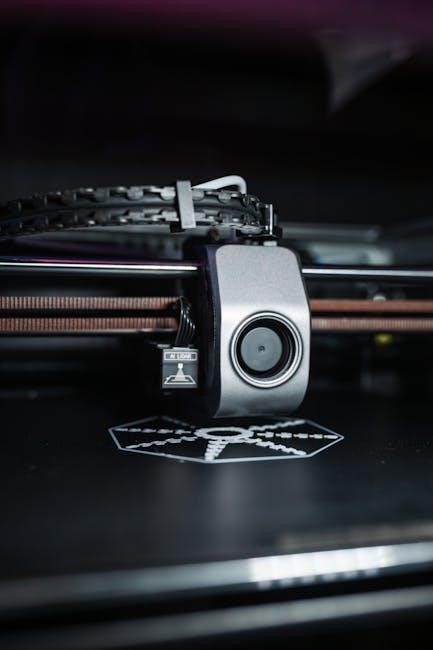
Step 5: Evaluate and Select a Solution

Evaluating and selecting a solution is a critical step in the Engineering Design Process. After generating multiple ideas, engineers analyze each potential solution against the established criteria and constraints. This step involves assessing factors such as cost, safety, efficiency, and feasibility. Tools like decision matrices can be used to systematically compare solutions and identify the most promising option. The goal is to select the solution that best addresses the problem while balancing practical limitations. Once a solution is chosen, it is important to document the rationale behind the decision. This step ensures that the selected design is well-suited for further development and testing. The Engineering Design Process worksheet can help organize this evaluation, making it easier to track and justify the chosen solution.
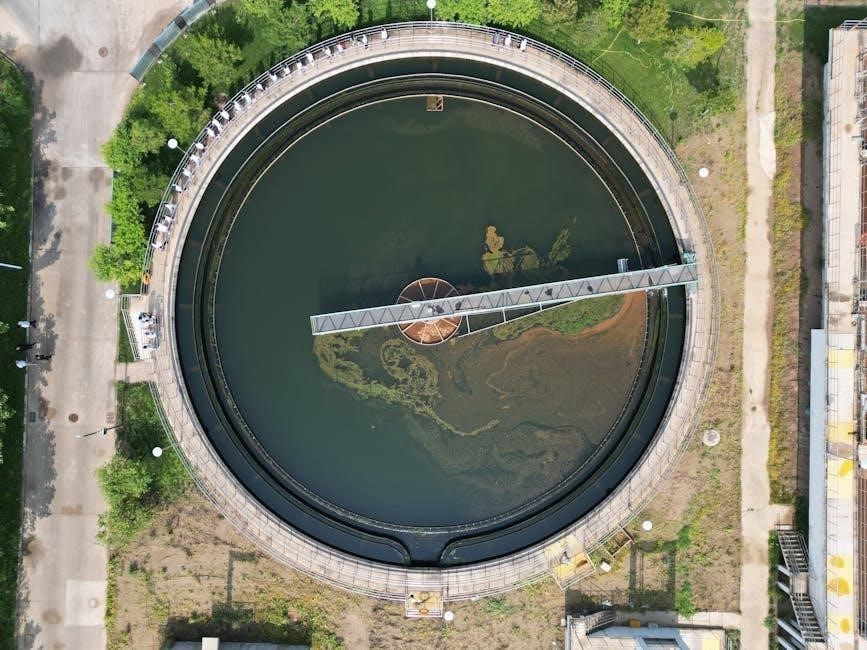
Step 6: Prototype and Test
Prototyping and testing are essential steps in the Engineering Design Process. A prototype is a physical or digital model of the proposed solution, allowing engineers to test its functionality and performance. During testing, the prototype is evaluated against the defined criteria and constraints to determine if it effectively addresses the problem. Feedback from testing is crucial for identifying areas of improvement. The Engineering Design Process worksheet can be used to document test results, note observations, and outline necessary revisions. This iterative process ensures that the solution is refined and optimized before final implementation. By systematically testing and analyzing the prototype, engineers can validate their design and make informed decisions for further refinement. This step is vital for ensuring the solution meets the desired standards and user expectations.
Step 7: Optimize and Refine
Optimizing and refining the solution is the final step in the Engineering Design Process. After prototyping and testing, engineers analyze the results to identify areas for improvement. This step involves iterating on the design, making adjustments to enhance performance, efficiency, and user satisfaction. The Engineering Design Process worksheet is a valuable tool for documenting these refinements, ensuring that all changes are tracked and aligned with the original problem’s criteria and constraints. By systematically reviewing and perfecting the design, engineers can ensure that the final solution is both effective and practical. This iterative process fosters creativity and guarantees that the solution meets the desired standards, preparing it for implementation or presentation. Refinement is crucial for achieving a high-quality, well-rounded outcome.
Engineering Design Process Worksheet
The Engineering Design Process Worksheet is a structured tool guiding students through problem-solving. It organizes each step, from identifying the problem to refining solutions, ensuring clarity and alignment with STEM standards.
Purpose of the Worksheet
The purpose of the Engineering Design Process Worksheet is to provide a structured framework for students to systematically approach problem-solving. It guides them through each step of the EDP, from identifying the problem to refining solutions. The worksheet ensures clarity and organization, helping students stay focused and track their progress; It also serves as a valuable tool for teachers to assess understanding and adherence to the design process. By using the worksheet, students can document their research, brainstorming, and testing, fostering accountability and reflective learning. Additionally, it aligns with STEM standards, promoting critical thinking and innovation. The worksheet is designed to be adaptable, making it suitable for various engineering challenges and educational levels. Ultimately, it enhances the learning experience by providing a clear roadmap for creative problem-solving and design thinking.
Structure and Components of the Worksheet

The Engineering Design Process Worksheet is structured to guide students through each step of the EDP, ensuring a comprehensive approach to problem-solving. It typically includes sections for identifying the problem, defining criteria and constraints, conducting research, brainstorming solutions, evaluating options, and developing prototypes. The worksheet also provides spaces for sketching designs, documenting testing results, and reflecting on outcomes. Components such as prompts and guidelines help students stay organized and focused. Additionally, it often includes areas for goal setting, data analysis, and iteration planning. The worksheet is designed to be user-friendly, with clear headings and dedicated spaces for each phase of the process. This structure makes it an effective tool for teaching the EDP in classrooms, aligning with STEM education standards and fostering a systematic approach to design thinking. Its adaptability allows it to be tailored to various challenges, making it a versatile resource for educators and students alike.
How to Use the Worksheet Effectively
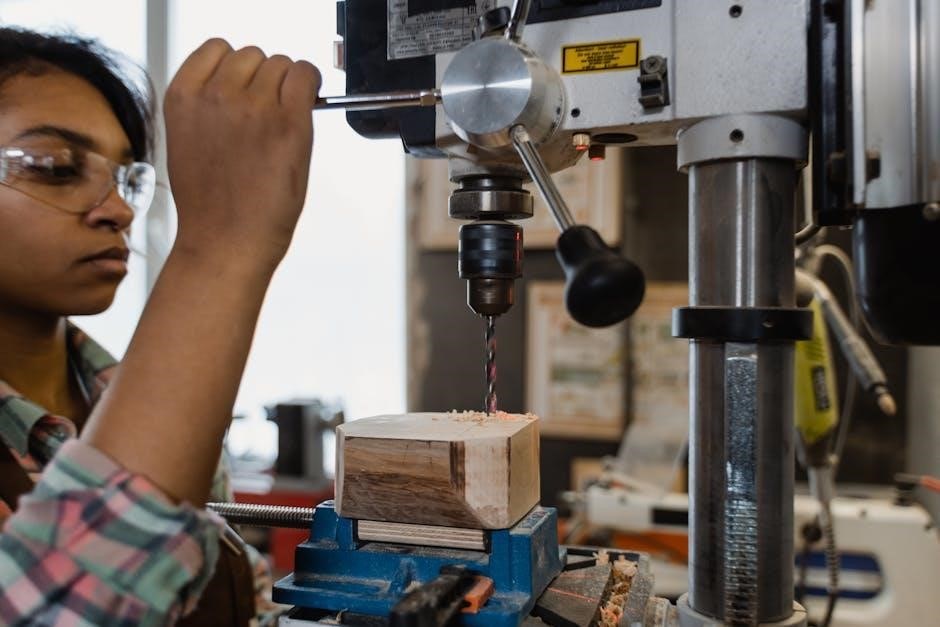
To use the Engineering Design Process Worksheet effectively, start by thoroughly understanding the problem or challenge at hand. Begin by filling out the sections step-by-step, ensuring each phase of the EDP is addressed. Use the provided spaces to document your thoughts, sketches, and data. If additional room is needed, attach extra pages or expand on specific sections. Encourage collaboration by sharing ideas within teams and using the worksheet as a guide for discussions. Regularly review and reflect on your progress to ensure alignment with project goals. Teachers can integrate the worksheet into lesson plans, aligning it with STEM standards to reinforce design thinking skills. By following the worksheet’s structure and completing each step diligently, students can develop a systematic approach to solving problems, fostering innovation and critical thinking. This tool is most effective when used consistently across projects, helping students refine their understanding of the EDP.
Benefits of Using the EDP Worksheet
The EDP worksheet enhances organization, aligns with STEM standards, and fosters innovation, providing a structured approach to problem-solving and promoting better learning outcomes for students.
Enhanced Organization and Clarity
The EDP worksheet provides a structured framework, ensuring all steps of the design process are organized and clearly defined. By breaking down the process into manageable sections, students can systematically address each phase, from identifying the problem to optimizing solutions. This clarity reduces confusion and ensures that no critical steps are overlooked. The worksheet’s organized format allows for easy documentation of ideas, research, and progress, making it simpler to track development over time. Additionally, it helps students present their work in a coherent manner, fostering better communication of their design thinking. This structured approach not only enhances productivity but also improves accountability, ensuring that all aspects of the problem-solving process are thoroughly explored and documented.
Improved Critical Thinking Skills
The EDP worksheet enhances critical thinking by guiding students through structured problem-solving steps. It encourages deep analysis of challenges, fostering the ability to identify key issues and develop effective solutions. By systematically evaluating criteria, constraints, and potential solutions, students refine their ability to make informed decisions. The worksheet’s iterative nature promotes reflection and refinement, teaching students to reassess and improve their designs based on feedback and testing results. This process cultivates analytical skills, as students learn to weigh pros and cons, prioritize solutions, and optimize outcomes. Over time, this structured approach helps students develop a mindset that embraces problem-solving as a thoughtful, methodical, and creative process, preparing them for real-world engineering challenges.
Alignment with STEM Standards
The Engineering Design Process (EDP) worksheet aligns seamlessly with STEM education standards, fostering skills in science, technology, engineering, and mathematics. By guiding students through structured problem-solving, the worksheet encourages the application of mathematical and scientific principles to real-world challenges. It promotes the development of solutions that adhere to defined criteria and constraints, a key aspect of STEM disciplines. The iterative nature of the EDP, as outlined in the worksheet, reflects the engineering practices emphasized in Next Generation Science Standards (NGSS), such as defining problems, designing solutions, and optimizing designs. This alignment ensures that students develop critical STEM skills, including technical knowledge, collaboration, and innovation, preparing them to address complex problems in their future careers.
The Engineering Design Process worksheet is a valuable tool that enhances organization, critical thinking, and problem-solving skills, making it an essential resource for STEM education and projects.
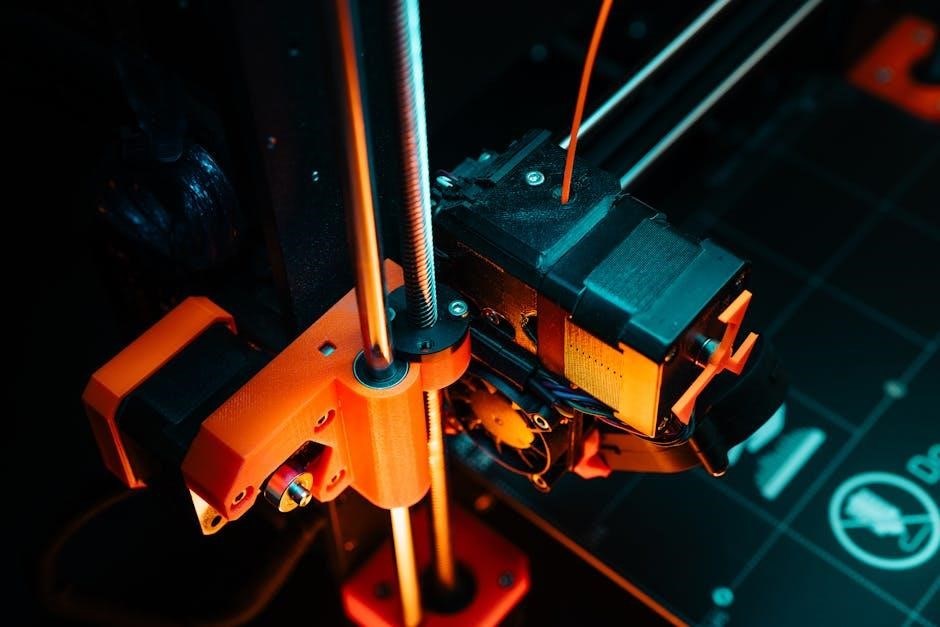
The Engineering Design Process (EDP) worksheet is a critical tool for structuring and guiding design projects, ensuring a systematic approach to problem-solving. It helps students and engineers define problems, gather information, generate solutions, and evaluate outcomes. The worksheet aligns with STEM standards, fostering critical thinking, creativity, and collaboration. By organizing thoughts and ideas, it enhances clarity and accountability throughout the design journey. Key components include identifying criteria, developing prototypes, and refining solutions based on testing and feedback. This structured approach not only improves learning outcomes but also prepares individuals for real-world engineering challenges; The EDP worksheet is an invaluable resource for educators and practitioners, promoting a deeper understanding of the design process and its practical applications.
Final Thoughts on the EDP Worksheet
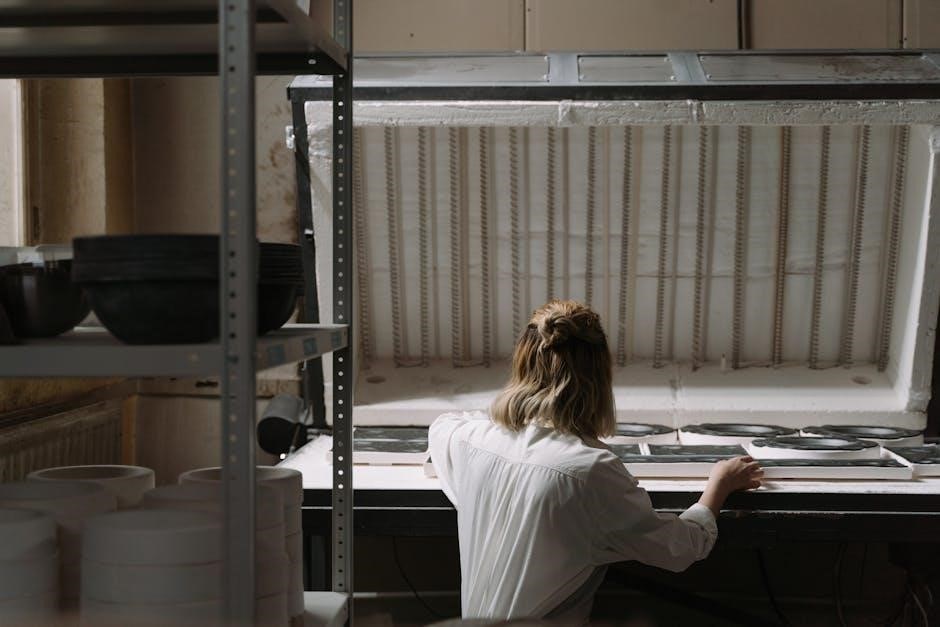
The EDP worksheet is an invaluable tool for streamlining the engineering design process, offering a structured framework for problem-solving. It provides clarity and organization, enabling users to systematically navigate each step, from identifying challenges to refining solutions. By aligning with STEM standards, it fosters critical thinking, creativity, and collaboration, making it a powerful resource for both educational and professional settings. Educators can use it to teach design thinking, while engineers can rely on it to ensure comprehensive and innovative solutions. Its accessibility and adaptability make it a cornerstone for anyone engaging in design projects, promoting a deeper understanding of engineering principles and preparing individuals for real-world challenges effectively.
